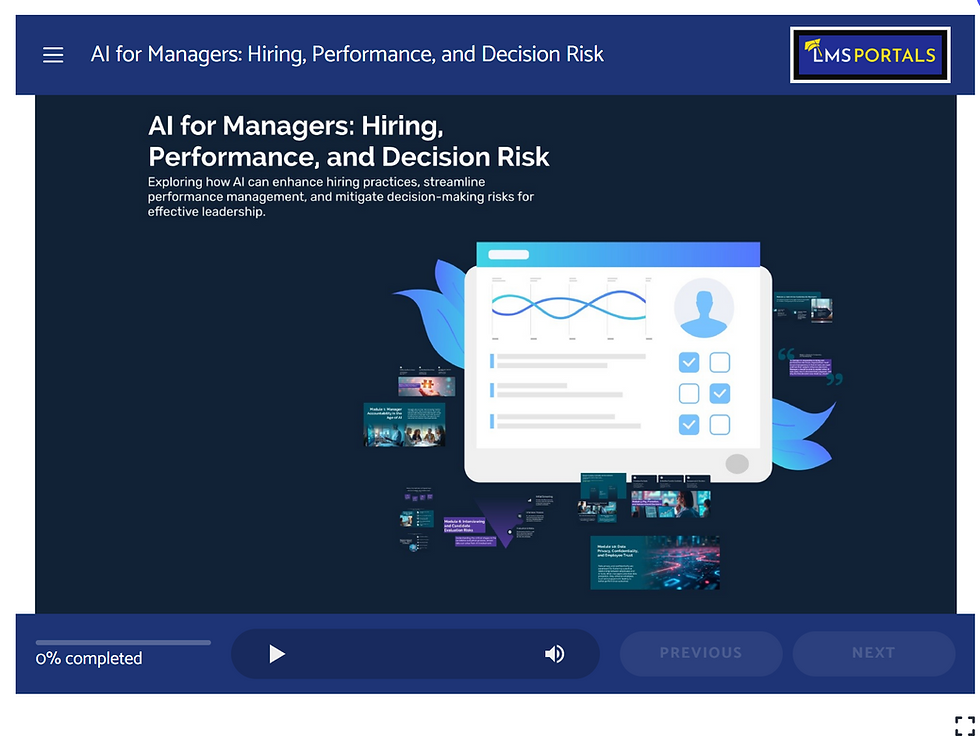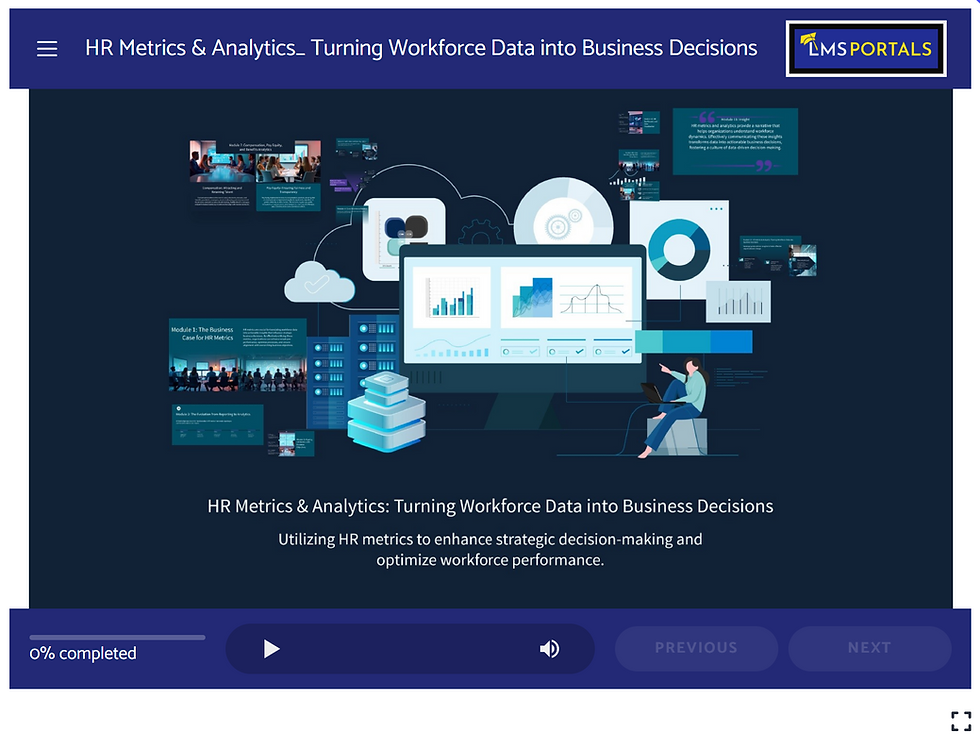How to Reduce Turnover and Retain Your Top Employees
- LMSPortals

- Mar 26, 2023
- 4 min read

Employee turnover rates can vary significantly by industry, company size, and other factors. However, turnover is a common challenge that most organizations face. According to a 2021 report by the Bureau of Labor Statistics, the national average turnover rate for all industries in the United States was 5.9% for 2020.
However, turnover rates can vary widely by industry. For example, the turnover rate for the hospitality industry is typically higher than the national average due to the seasonal nature of the industry and the prevalence of part-time and hourly workers. The healthcare industry also experiences relatively high turnover rates due to the demand for skilled workers and the shortage of healthcare professionals in many areas.
It's also worth noting that turnover rates can vary based on the employee's tenure with the organization. For example, new employees may have a higher turnover rate than more tenured employees who have built stronger relationships with the organization.
While some level of turnover is inevitable, organizations can take steps to minimize turnover and retain their top employees. Implementing strategies such as offering competitive compensation and benefits, providing opportunities for growth and development, and creating a positive work environment can all help to reduce turnover and retain top talent.
The Cost of Employee Turnover
Employee turnover can have a significant impact on an organization's bottom line. Here are some of the costs associated with employee turnover:
Recruitment Costs
When an employee leaves, the organization must incur recruitment costs to find a replacement. These costs can include job postings, recruiting fees, and time spent by hiring managers and recruiters.
Training Costs
New employees require training to learn the organization's processes and procedures, which can be time-consuming and costly. The cost of training can be even higher if the employee who left was a high-performing employee with specialized skills.
Loss of Productivity
When an employee leaves, there is a temporary loss of productivity as the organization searches for a replacement and the new employee gets up to speed. This can impact the organization's ability to meet deadlines and deliver projects on time.
Reduced Morale
High employee turnover can lead to decreased morale among remaining employees. This can result in decreased productivity, increased absenteeism, and higher turnover rates.
Organizational Knowledge Loss
When employees leave, they take with them their knowledge, skills, and experience. This loss can have a negative impact on the organization's ability to innovate and compete.
Customer Impact
Employee turnover can also impact the organization's customers. When employees who have built relationships with customers leave, it can lead to decreased customer satisfaction and loyalty.
The cost of employee turnover can be significant, both in terms of direct costs such as recruitment and training, and indirect costs such as decreased productivity and customer impact. Therefore, it is essential to implement strategies to retain top talent and reduce turnover.
Seven Steps to Reduce Employee Turnover
Reducing employee turnover and retaining top employees can be challenging, but it is crucial for the success of any organization. Here are some strategies that can help you retain your top employees:
Hire the right people: Hiring the right people from the start can help reduce turnover. Ensure that you are hiring employees who are a good fit for your organization's culture and values.
Offer competitive compensation and benefits: Compensation and benefits packages are essential to attract and retain top talent. Ensure that you are paying your employees fairly and offer benefits such as health insurance, retirement plans, and paid time off.
Create a positive work environment: A positive work environment is essential to employee satisfaction and retention. Foster a culture of teamwork, collaboration, and open communication. Encourage employee feedback and suggestions.
Recognize and reward performance: Recognize and reward your top performers for their hard work and achievements. Offer incentives such as bonuses, promotions, or public recognition.
Provide work-life balance: Employees value work-life balance, and it can help reduce turnover. Offer flexible work arrangements, such as telecommuting, flexible schedules, or time off for personal reasons.
Listen to employee feedback: Listen to your employees' feedback and take action to address their concerns. Conduct regular surveys or hold town hall meetings to gather feedback from your employees.
Provide opportunities for growth and development: Your top employees are likely looking for opportunities to advance their careers. Provide opportunities for growth and development through training, mentoring, and coaching programs.
About LMS Portals
At LMS Portals, we provide our clients and partners with a SaaS-based, multi-tenant learning management system that allows you to launch a dedicated training environment (a portal) for each of your unique audiences.
The system includes an embedded SCORM-compliant course authoring tool that enables most anyone to build engaging courses quickly and easily.
We also offer a complete library of ready-made courses, covering most every aspect of corporate training and employee development.
If you choose to, you can create Learning Paths to deliver courses in a logical progression and add structure to your training program. The system also supports Virtual Instructor-Led Training (VILT) and provides tools for online coaching and social learning.
Together, these features make the LMS Portals platform the ideal training solution to help reduce your employee turnover and retain your top employees.
Contact us today to get started or visit our Partner Program pages



Comments